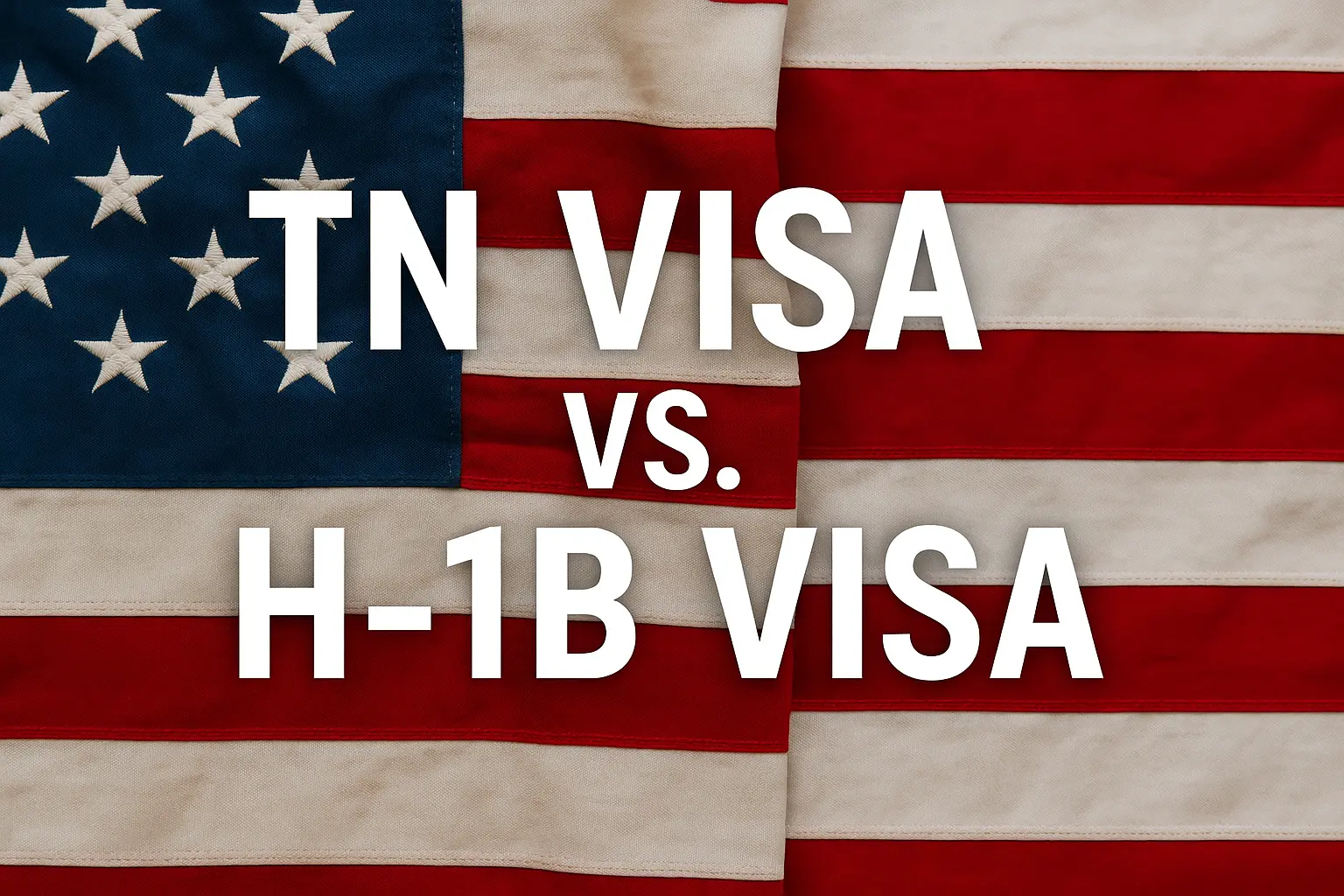E2 vs. EB-5: Which Investment Visa is Right for You?
Choosing the Right Path to the American Dream
Every year, thousands of ambitious entrepreneurs and investors from around the globe look toward the United States not only as a land of opportunity but also as a strategic base for expanding their businesses and securing a better future for their families. Immigration through investment has become a central pathway, offering a win-win scenario: foreign nationals invest in the U.S. economy, while also accessing immigration benefits.
Among the most well-known investor visa options are the E2 Visa and the EB-5 visa Immigrant Investor Visa. On the surface, both allow foreign nationals to enter the U.S. through investment, but they differ dramatically in requirements, benefits, risks, and timelines.
This article is a comprehensive guide to help you answer the critical question: E2 vs. EB-5 visa — which investment visa is right for you? We’ll walk through each program in detail, compare them side by side, analyze real-world case studies, and highlight strategic considerations for business owners, families, and high-net-worth individuals.
Understanding the E2 Visa
What is the E2 Visa?
The E2 Treaty Investor Visa is a non-immigrant visa that allows foreign nationals from treaty countries to live and work in the U.S. by investing in and actively managing a U.S.-based business. It is not a direct path to a green card, but it can be renewed indefinitely as long as the business remains operational and profitable.
Key Features of the E2 Visa
-
Investment Amount: No fixed minimum, but typically ranges from $100,000 to $300,000 depending on the business type.
-
Nationality Requirement: Applicants must be citizens of a country that maintains a treaty of commerce and navigation with the U.S. (e.g., Mexico, Canada, many EU countries, Japan).
-
Business Involvement: The investor must play an active role in directing and managing the business.
-
Visa Duration: Typically issued for 2–5 years, with unlimited renewals.
-
Family Benefits: Spouses and dependent children under 21 can accompany the investor; spouses may apply for work authorization.
Advantages of the E2 Visa
-
Lower investment threshold than EB-5.
-
Fast processing times (often a few months, depending on the consulate).
-
Renewable indefinitely as long as business continues.
-
Flexibility in the type of business (start-up, franchise, or existing business).
-
Work authorization for spouse creates dual-income family stability.
Limitations of the E2 Visa
-
No direct path to permanent residency (green card).
-
Restricted to treaty country nationals.
-
Renewal depends on continued business success.
-
Subjective evaluation of “substantial investment” by consular officers.
Understanding the EB-5 Visa
What is the EB-5 Visa?
The EB-5 Immigrant Investor Program provides foreign nationals with a direct path to permanent residency (green card) by making a qualifying investment in the U.S. economy. Established in 1990, the program was designed to stimulate job creation and capital investment, particularly in areas of need.
Key Features of the EB-5 Visa
-
Investment Amount: Minimum $1,050,000, or $800,000 if the investment is in a Targeted Employment Area (TEA) — typically rural or high-unemployment regions.
-
Job Creation Requirement: Must create at least 10 full-time U.S. jobs within two years.
-
Investment Options: Direct investment in a business or through a USCIS-approved Regional Center.
-
Path to Green Card: Investors, spouses, and children under 21 receive conditional green cards, which can become permanent.
-
Citizenship Eligibility: After 5 years as a permanent resident, investors may apply for U.S. citizenship.
Advantages of the EB-5 Visa
-
Direct path to a green card and eventual citizenship.
-
No nationality restrictions.
-
Passive investment option through regional centers.
-
Access to U.S. education system and ability to live anywhere in the country.
Limitations of the EB-5 Visa
-
High investment threshold ($800,000–$1,050,000).
-
Long processing times, often several years.
-
Strict job creation requirements.
-
Risk of denial if project fails to create jobs or meet investment criteria.
E2 vs. EB-5: Side-by-Side Comparison
| Feature | E2 Visa | EB-5 Visa |
|---|---|---|
| Type | Non-immigrant | Immigrant (green card) |
| Investment Amount | Typically $100K–$300K | $800K–$1.05M |
| Nationality Requirement | Treaty countries only | Open to all |
| Job Creation Requirement | Not fixed, but must support business | 10 full-time U.S. jobs |
| Processing Time | 2–6 months | 18–48 months (sometimes longer) |
| Path to Green Card | No direct path | Yes, direct path |
| Renewal | Unlimited, business-dependent | Not applicable |
| Family Benefits | Spouse can work; children study until 21 | Green cards for entire family |
| Business Involvement | Active management required | Can be active or passive (regional center) |
Strategic Considerations
Who Should Choose the E2 Visa?
The E2 visa is ideal for:
-
Entrepreneurs with a moderate investment budget.
-
Nationals of treaty countries seeking fast entry to the U.S..
-
Business owners who want to personally manage and grow a company.
-
Families looking for flexibility without committing to permanent residency immediately.
Who Should Choose the EB-5 Visa?
The EB-5 visa is ideal for:
-
High-net-worth individuals seeking a green card for the entire family.
-
Investors who want a passive option via regional centers.
-
Families who prioritize U.S. citizenship eligibility.
-
Individuals with larger capital reserves who are comfortable with longer wait times.
There are also options for Transitioning from E-2 to EB-5 visa
Use the Same Business for EB-5 visa
-
- The E-2 investor can often “upgrade” the E-2 business into an EB-5 qualifying business.
- Must contribute enough new capital to meet EB-5 minimums ($800k or $1.05M).
- Must prove that at least 10 full-time jobs will be created (or already have been created).
- USCIS will examine whether prior E-2 funds were at risk and fully invested — if so, those funds may count toward the EB-5 total.
Real-World Case Studies
Case Study 1: The Entrepreneur from Mexico
María, a successful restaurateur from Mexico, wanted to expand her brand into the U.S. With $250,000 in capital and Mexican citizenship (a treaty country), she applied for the E2 visa. Within months, she was able to open her restaurant in Texas. Her spouse found work in a related industry, and their children enrolled in American schools. While not a green card, the E2 visa gave them the lifestyle and opportunity they wanted quickly and affordably.
Case Study 2: The Investor from China
Li Wei, a Chinese national without access to the E2 visa, turned to the EB-5 program. He invested $800,000 into a regional center project in a rural area, creating over 10 jobs. Though the process took nearly three years, Li Wei and his family received green cards, providing permanent residency and a path to citizenship.
Common Mistakes to Avoid
-
Underestimating required capital for E2 businesses.
-
Failing to document job creation for EB-5.
-
Assuming E2 can lead to a green card automatically — it cannot.
-
Choosing the wrong business structure or failing to plan for long-term compliance.
The Future of Investor Visas
U.S. investor visa programs are constantly evolving with legislative changes and economic demands. Processing backlogs, new regulations, and country-specific demand (such as India and China for EB-5) all affect timelines and strategies. Investors should work with immigration attorneys and business advisors to stay compliant and maximize their chances of success.
Why Work with 3A Immigration Services?
At 3A Immigration Services, we specialize in tailored strategies for investors and entrepreneurs. Whether you’re deciding between the E2 and EB-5, exploring other investor visa options, or looking for comprehensive global mobility planning, our team offers:
-
Expert legal analysis and eligibility assessments.
-
End-to-end visa support, from business planning to USCIS compliance.
-
Access to strategic partners for franchises, regional centers, and business acquisitions.
-
Personalized guidance for families navigating education, relocation, and settlement.
📌 Ready to take the next step? Contact 3A Immigration Services today and let us design the right investor visa strategy for your future.
Choosing between the E2 visa and the EB-5 program is not just about the investment amount — it’s about aligning your immigration goals, financial capabilities, and family priorities. The E2 is best suited for hands-on entrepreneurs from treaty countries with moderate investment budgets, while the EB-5 provides a direct pathway to permanent residency for those with greater capital resources.
With the right guidance and planning, both visas can open the door to the American Dream.
RELATED LINKS
BACK TO BLOG





